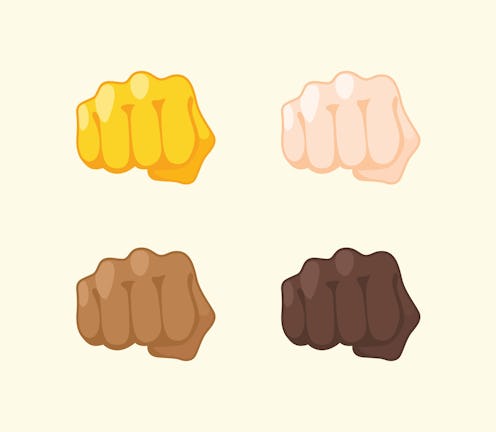The Definitive Guide to Choosing a Skin Color Emoji
It’ll all be okay 👍

At this very moment, someone, somewhere, is staring at their phone or computer screen trying to decide which skin color hand-emoji to use: the default yellow, whichever one most closely matches their skin, or — mysteriously — something else?
The answer, a recent NPR story asserts, “can be more complex than you think.”
For instance, the piece explores, what if you are mixed-race but feel uncomfortable choosing a skin tone that may be associated with a specific ethnicity? What if you are white but you use the default yellow because you feel uncomfortable drawing attention to your privilege? What if you actually should be drawing attention to your white privilege by choosing the pale hand? What if, even more bafflingly, you are white but you choose the brown emoji — and, actually, you did that as a way to try to be a good ally?
I don’t really have to think about all of these things because I’m Chinese American and default yellow works just fine, but these are real questions that are being asked by some people and explored by academics — specifically, three researchers at the University of Edinburgh, one of whom is also an “emoji researcher at Google,” as well as another, different researcher in Berlin, who in 2018 wrote an article for the Daily Dot titled, "The problem with emoji skin tones that no one talks about.” Now, four years later, we are finally ready to have that conversation.
Put down your research and shelve your anxieties, everyone, because I have a definitive set of rules for how to choose a skin color emoji. I officially decree that any of these options are fine:
- Default yellow
- The skin tone that is closest to yours
- Any shade lighter than your own (to allow for, for instance, my colleague Sarah to still use the white fist emoji — 👊🏻👊🏻👊🏻 — when commenting on Reese Witherspoon’s Instagram posts)
I’ll be expecting my diploma in the mail.